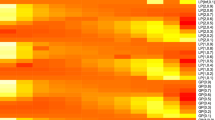Abstract
In the decision-making process, retaining the original data information has become a most crucial step. Dual hesitant fuzzy sets (DHFS), which can reflect the original membership degree and non-membership degree information given by the DMs, is a kind of new tool for the DMs to provide the original information as much as possible. In this paper, we focus on the decision- making problem by a projection model (Algorithm I) whose attribute values are given in the forms of dual hesitant fuzzy elements (DHFEs). In order to reflect the information of the data more accurately, we first divide the dual hesitant fuzzy decision matrix into membership degree matrix and non-membership degree matrix. Then we gain the virtual positive ideal solution from the membership degree matrix and the negative positive ideal solution from the non-membership degree matrix. And then the projection values from every solution to the virtual positive ideal solution and the negative positive ideal solution are calculated. In combination with the two projection values, the relative consistent degree is further calculated to rank all the alternatives. At the same time, in order to guarantee the rationality of the decision-making result, a variation coefficient method is developed to determine the weights of the attributes under dual hesitant fuzzy environment objectively. Finally, the existing algorithms (Algorithm II and Algorithm III, Algorithm IV, Algorithm V) are compared with our algorithm (Algorithm I). The comparison result shows that Algorithm I is a valuable tool for decision making.
Similar content being viewed by others
References
Atanassov, K. (1986). Intuitionistic fuzzy sets. Fuzzy Sets and Systems, 20, 87–96.
Bland, J. M., & Altman, D. G. (1996). Statistics notes: Measurement error proportional to the mean. British Medical Journal, 313, 106.
Chen, N., & Xu, Z. S. (2015). Hesitant fuzzy ELECTRE II approach: A new way to handle multi-criteria decision making problems. Information Sciences, 292, 175–197.
Dubois, D., & Prade, H. (1980). Fuzzy sets and systems, theory and applications. Academic Press.
Everitt, B. S., & Howell, D. C. (2005). Encyclopedia of statistics in behavioral science. Wiley.
Fan, Q. R., Ikejo, K., Nagamura, K., & Okada, K. (2016). Diagnosis of gear damage based on coefficient of variation method by analyzing vibration accelerations on one gear tooth. Journal of Advanced Mechanical Design, Systems, and Manufacturing, 10(2), 1–14.
Gao, H., Lu, M., & Wei, Y. (2019). Dual hesitant bipolar fuzzy hamacher aggregation operators and their applications to multiple attribute decision making. Journal of Intelligent & Fuzzy Systems, 37(4), 5755–5766.
Gou, X. J., Xu, Z. S., & Liao, H. C. (2017). Hesitant fuzzy linguistic entropy and cross-entropy measores and alternative queuing method for multiple criteria decision making. Information Sciences, 388, 225–246.
Guo, W. Q., An, Y. L., & Liu, S. X. (2011). Study on the driving forces of rocky desertification in Guizhou province based on variation coefficient method. Meteorological and Environmental Research, 2(2), 76–79.
Miyamoto, S. (2005). Remarks on basics of fuzzy sets and fuzzy multisets. Fuzzy Sets and Systems, 156, 427–431.
Opricovic, S., & Tzeng, G. H. (2004). Compromise solution by MCDM methods: A comparative analysis of VIKOR and TOPSIS. European Journal of Operational Research, 156(2), 445–455.
Pearson, K. (1896). Mathematical contributions to the theory of evolution. III. Regression, heredity and panmixia. Philosophical Transactions of the Royal Society of London, A, 187, 253–318.
Su, Z., Xu, Z. S., Zhao, H., & Liu, S. S. (2019). Distribution-based approaches to deriving weights from dual hesitant fuzzy information. Symmetry-Basel, 11(1), 1–20.
Torra, V. (2010). Hesitant fuzzy sets. International Journal of Intelligent Systems, 25, 529–539.
Wang, R. G., & Li, W. M. (2019). Extended VIKOR method of multi-attribute decision making under intuitionistic fuzzy environment based on a new distance measure. System Engineering and Electronics, 11(41), 2529–2530.
Wang, Z. B., & Qiu, B. Z. (2014). Fuzzy C-means clustering algorithm based on coefficient of variation. Advanced Materials Research, 998–999, 873–877.
Xu, R. N., & Li, C. L. (2001). Computation of dispersion coefficient of fuzzy valued data. Fuzzy System and Mathematics, 15(1), 62–66.
Z.S. Xu, The uncertain multiple attribute decision making method and application, Beijing Qing Hua University, 2004.
Xu, Z. S. (2007). Multiple-attribute group decision making with different formats of preference information on attributes. IEEE Transactions on Systems, Man, and Cybernetics-Part B, 37(6), 1500–1511.
Xu, Z. S., & Da, Q. L. (2004). Projection method for uncertain multiple attribute decision making with preference information on alternatives. International Journal of Information Technology & Decision Making, 3(3), 429–434.
Yoon, K. (1980). Systems selection by multiple attribute decision making, Ph. D. dissertation. Kansas State University.
Zadeh, L. A. (1965). Fuzzy sets. Information and Control, 8, 338–353.
Zhao, H., Xu, Z. S., & Liu, S. S. (2017). Dual hesitant fuzzy information aggregation with Einstein t-conorm and t-norm. Journal of Systems Science and Systems Engineering, 26(2), 240–264.
Zhu, B., & Xu, Z. S. (2017). Hesitant fuzzy Bonferroni means for multi-criteria decision making. Journal of the Operational Research Society, 64(12), 1831–1840.
Zhu, B., Xu, Z. S., & Xia, M. M. (2012). Dual hesitant fuzzy sets. Journal of Applied Mathematics, 26(5), 410–425.
Acknowledgements
This work was supported by the National Natural Science Foundation of China (Nos. 71771155, 72071135).
Author information
Authors and Affiliations
Corresponding authors
Additional information
Publisher's Note
Springer Nature remains neutral with regard to jurisdictional claims in published maps and institutional affiliations.
Rights and permissions
About this article
Cite this article
Ni, Y., Zhao, H., Xu, Z. et al. Multiple attribute decision-making method based on projection model for dual hesitant fuzzy set. Fuzzy Optim Decis Making 21, 263–289 (2022). https://doi.org/10.1007/s10700-021-09366-9
Accepted:
Published:
Issue Date:
DOI: https://doi.org/10.1007/s10700-021-09366-9




